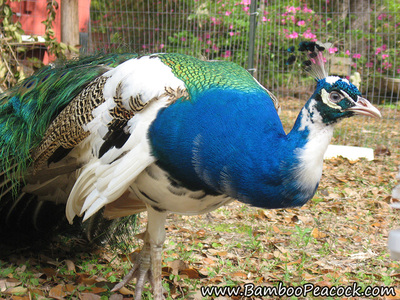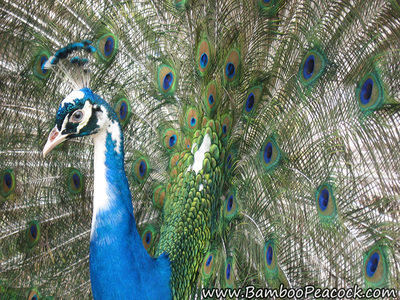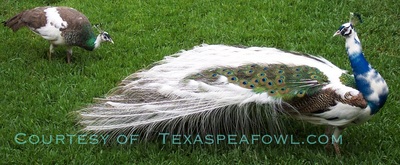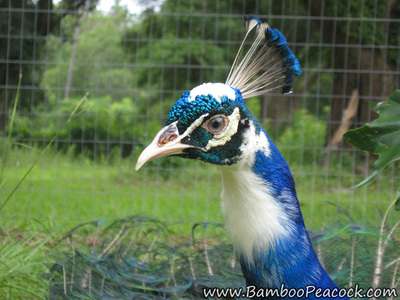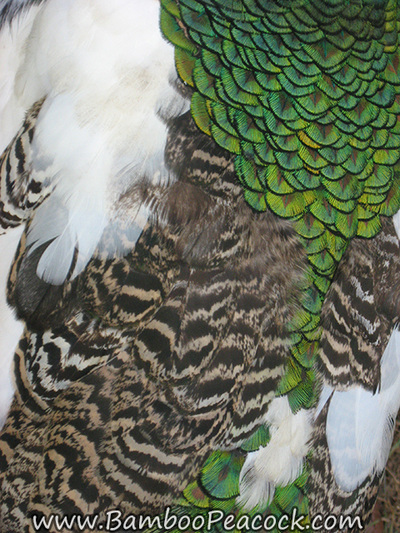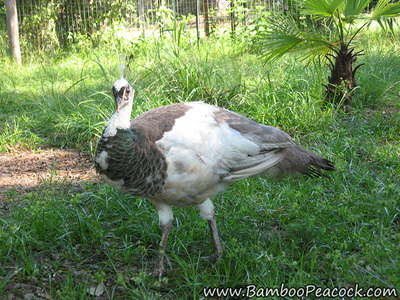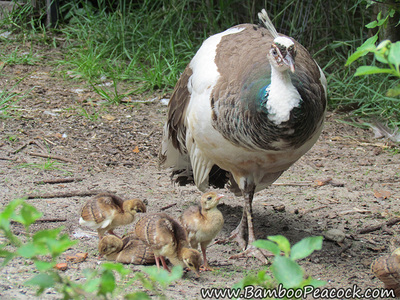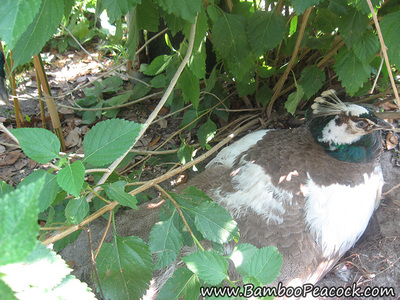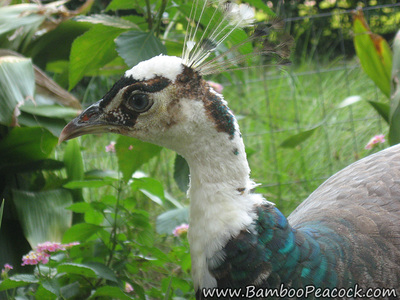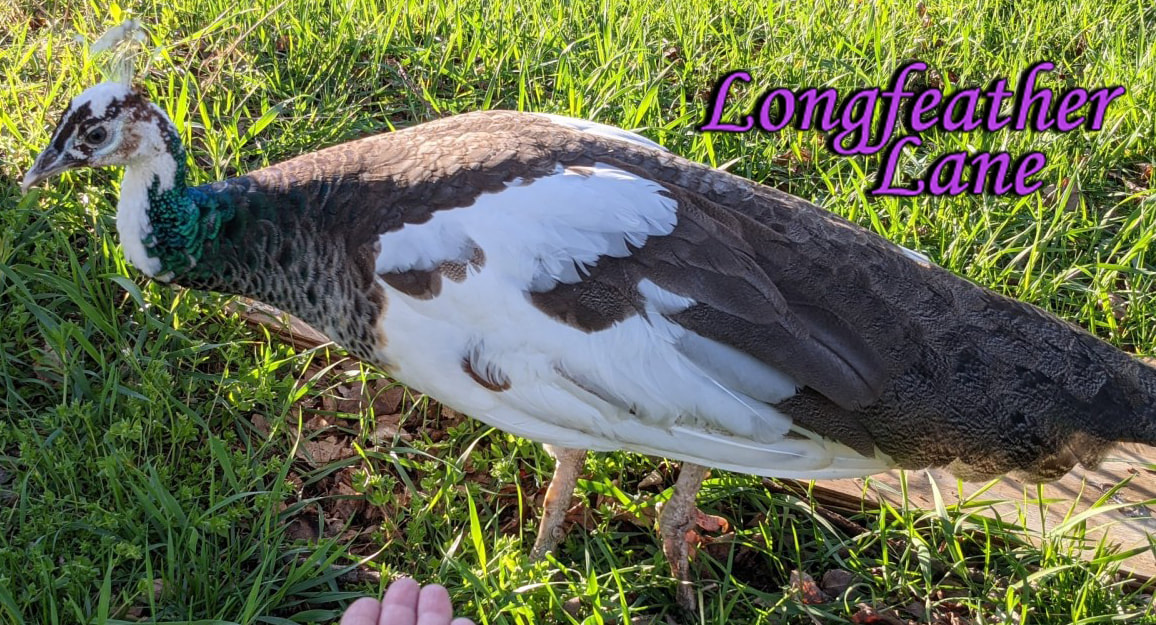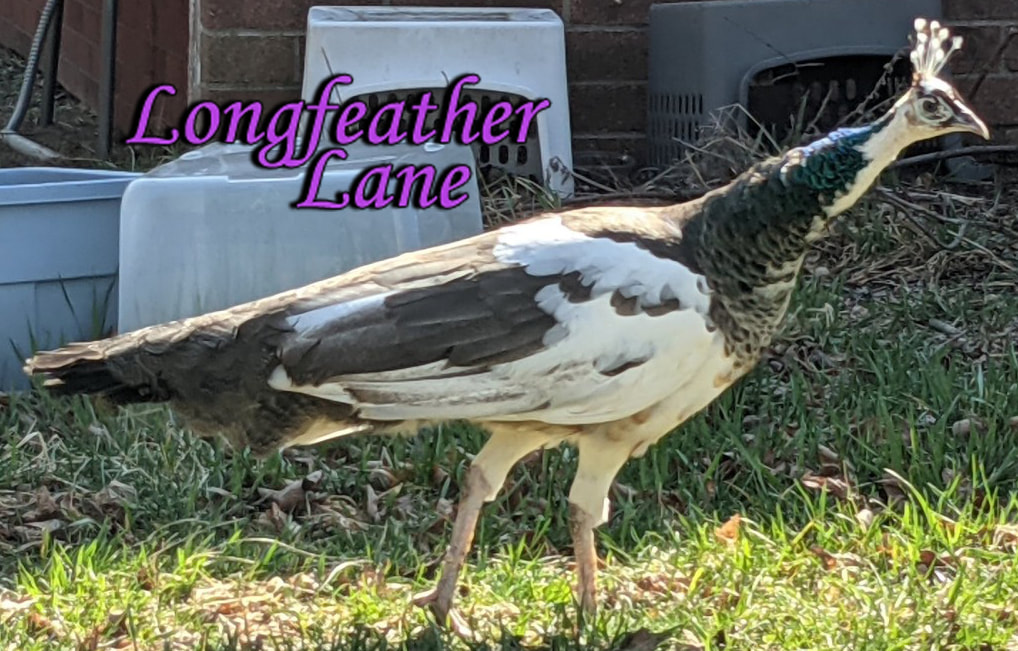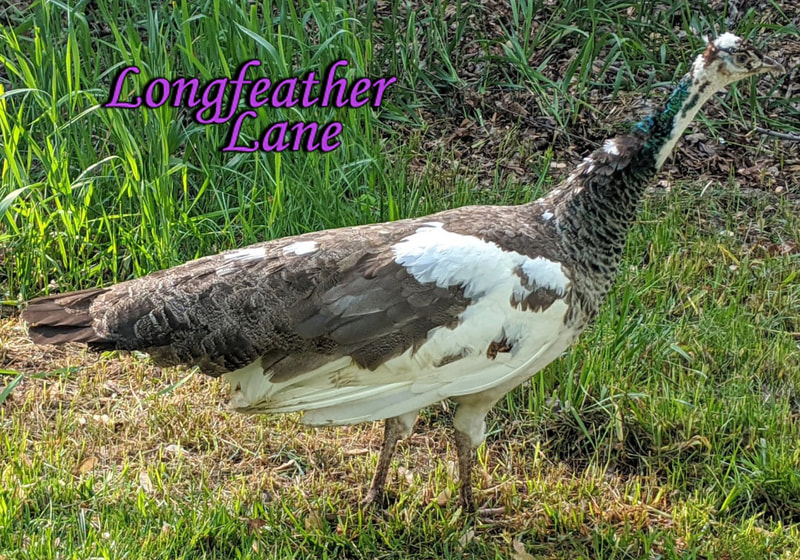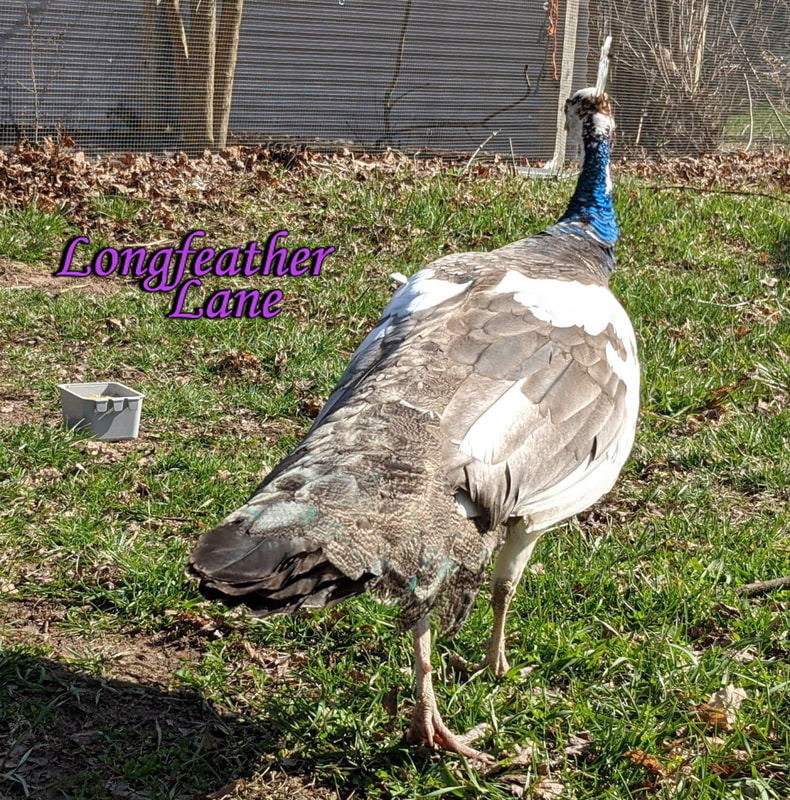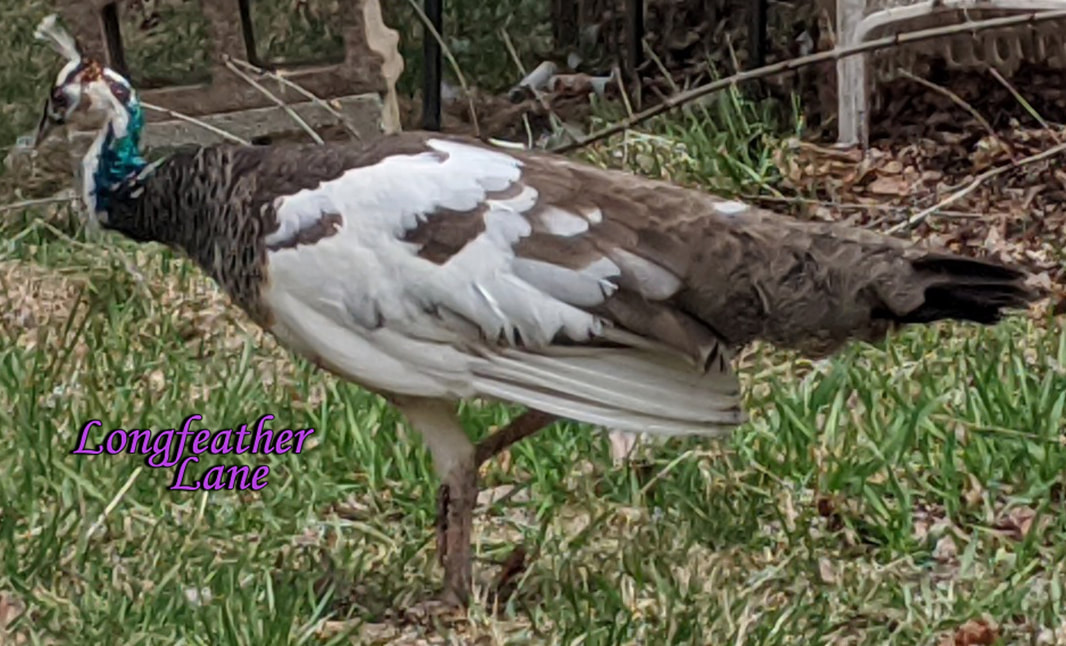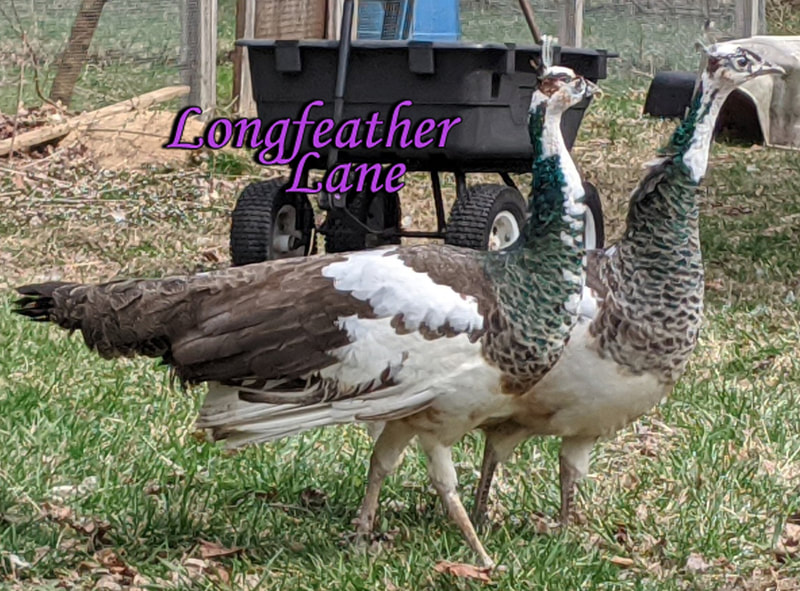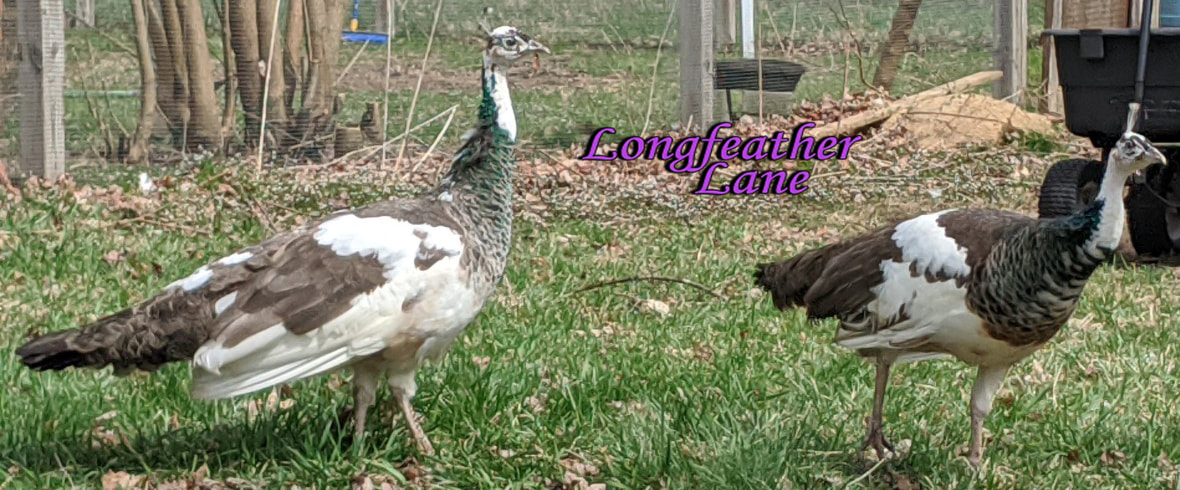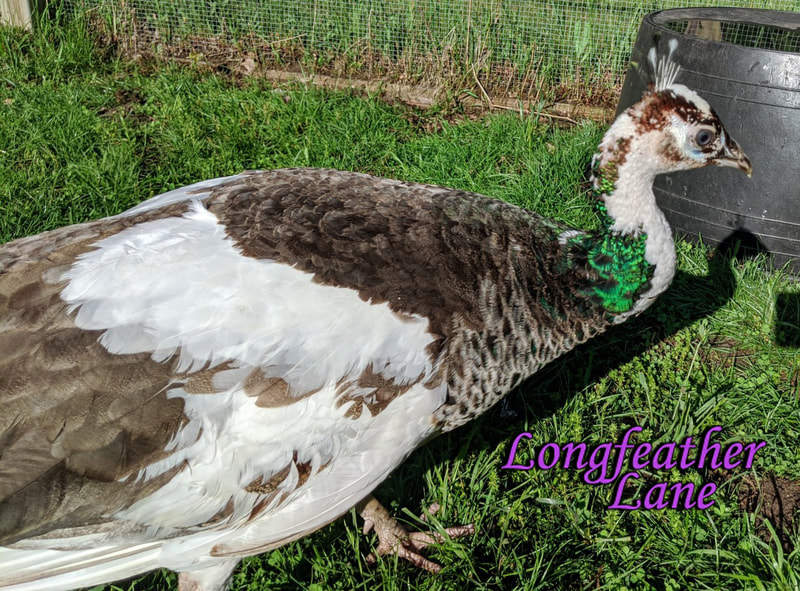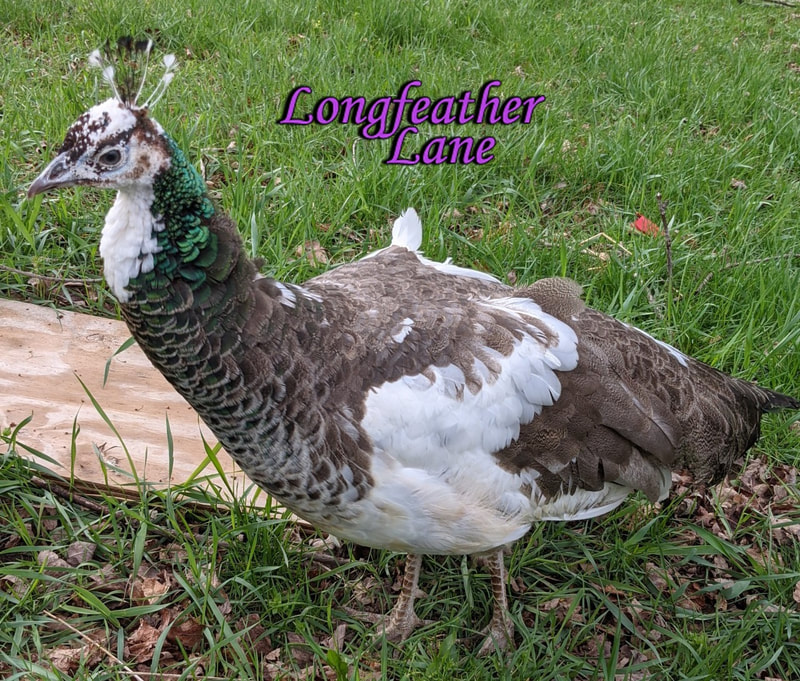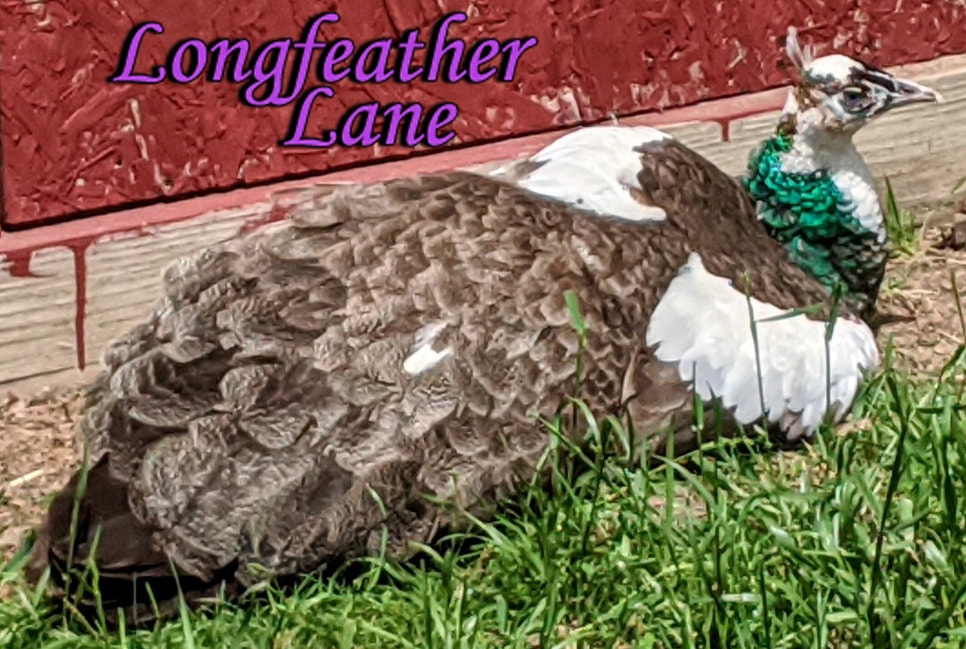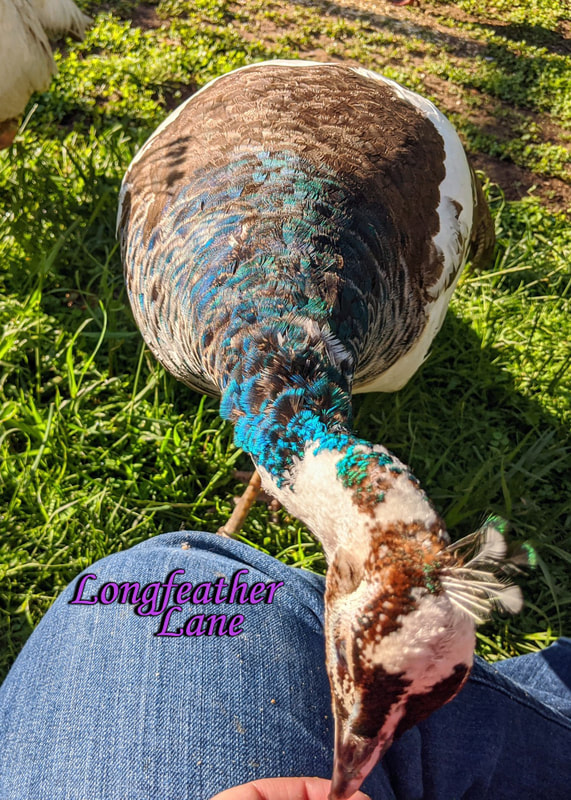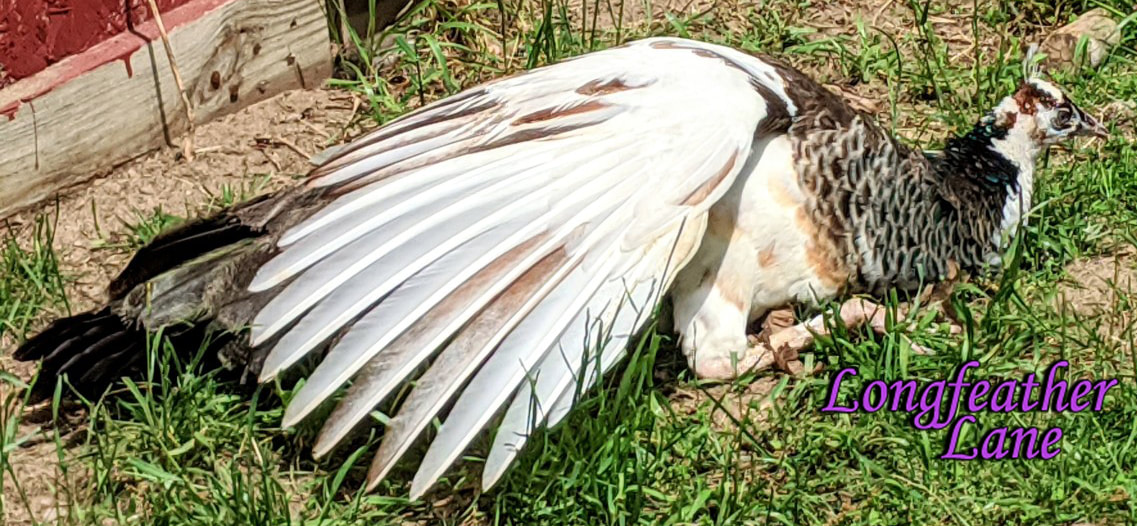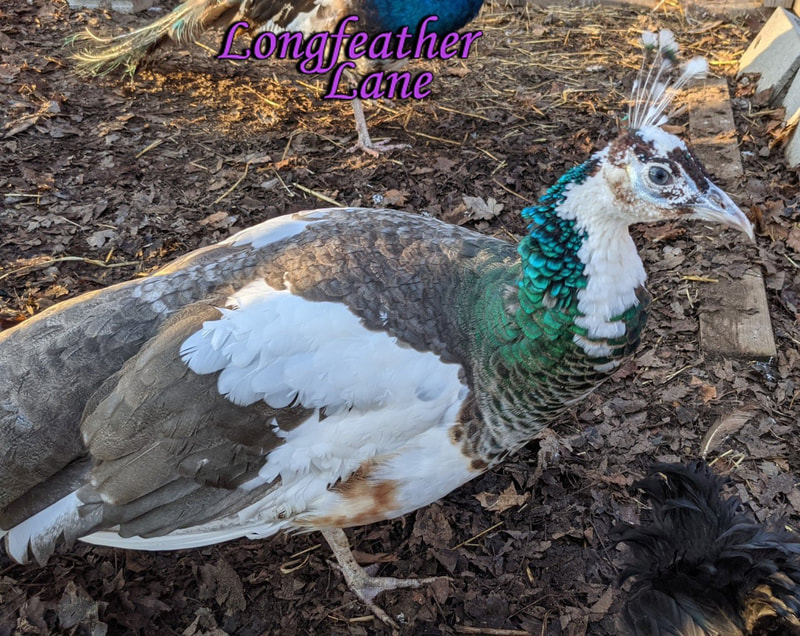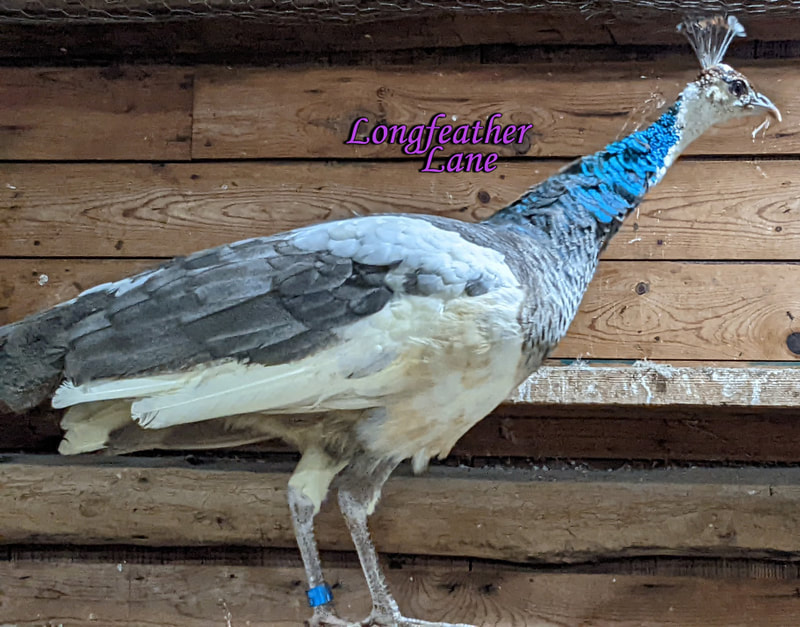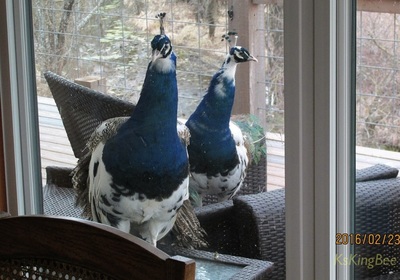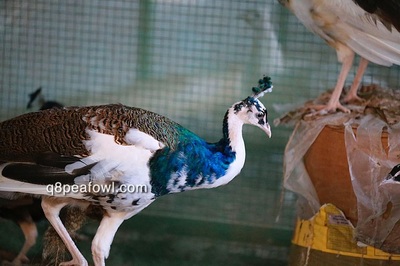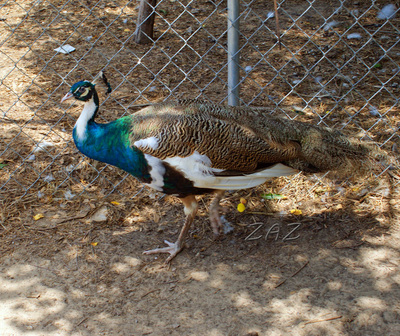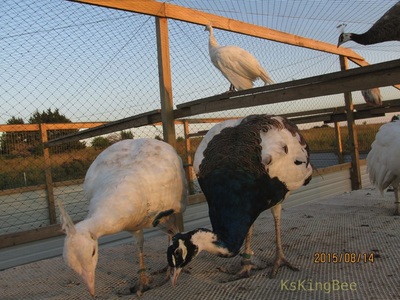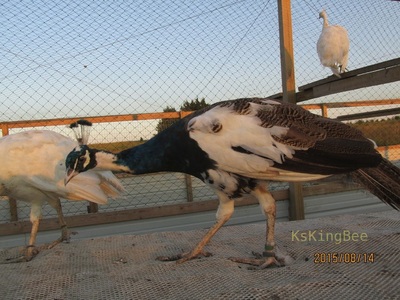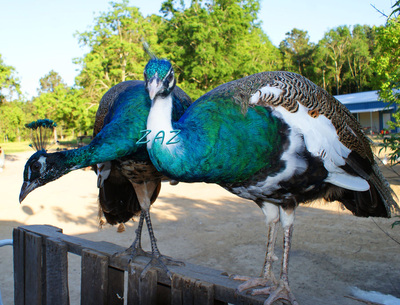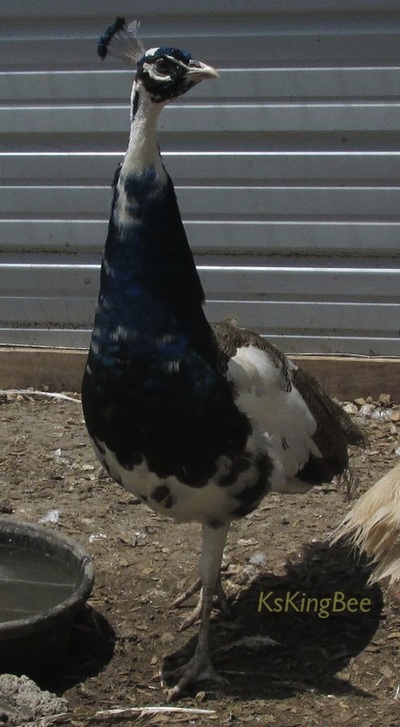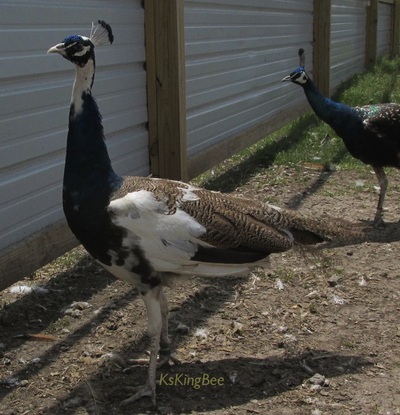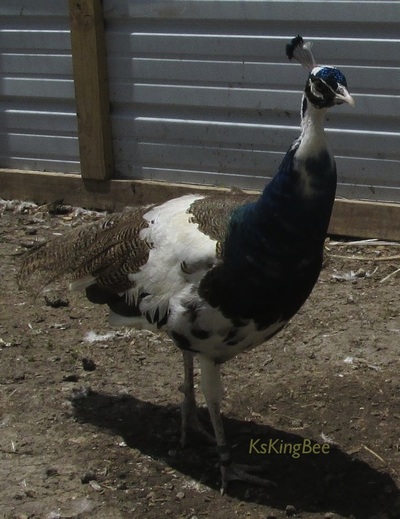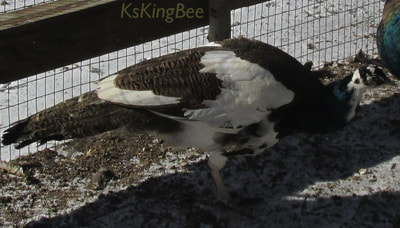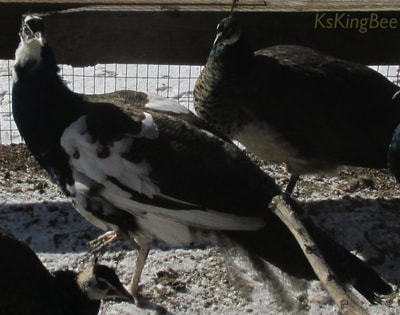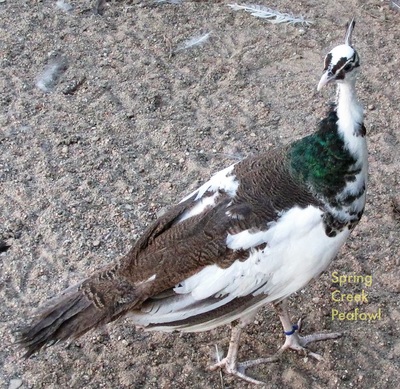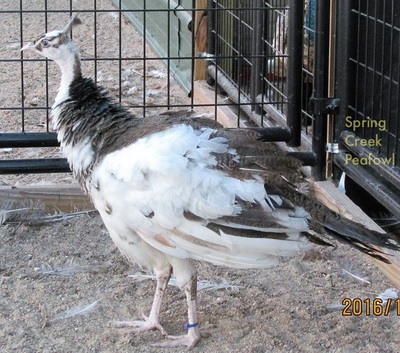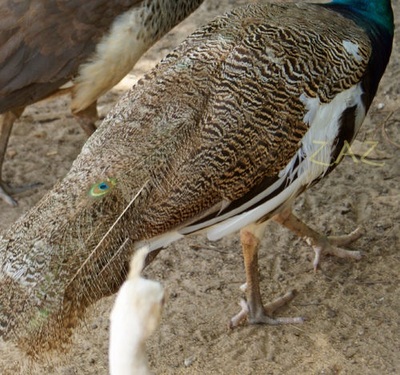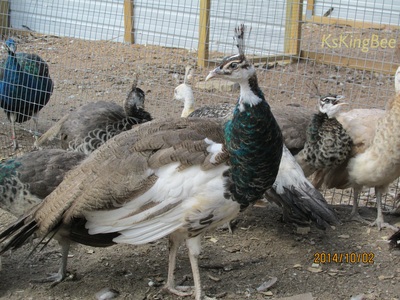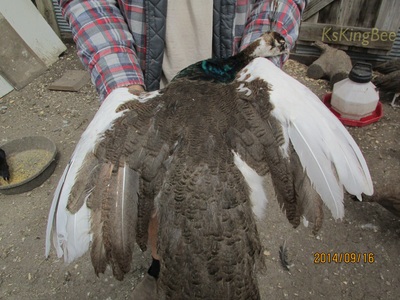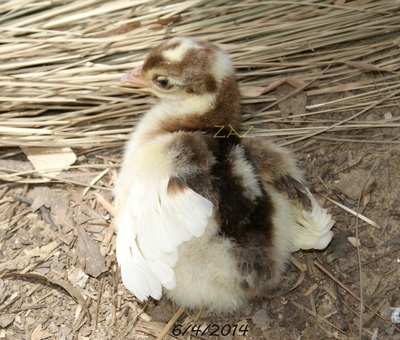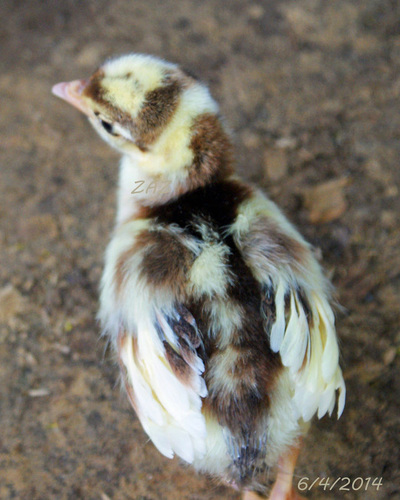Indian Blue Pied | Bleu Arlequin | Blau Gescheckt
|
*Please click on images to enlarge
|
COLOR:
Blue is the natural, unmutated color of the Indian peafowl, also known as the wild type (aka the type found in the wild).
CONTENTS:
This page contains photos of blues with the pied pattern mutation (wild type color, pied pattern).
PATTERN DESCRIPTION:
Pied looks like a colored bird with white patches in various, random patterns all over the body.
GENETICS:
For sake of ease, Pied is often referred to as a pattern mutation, but in actuality it is a harmless genetic condition called leucism, which specifically affects pigment cells to prevent placement during development. This results in feathers that lack color and appear white. There are no known deleterious effects in peafowl.
Pied is an autosomal leucistic phenotype, and is technically dual-expression of the white and pied genes. Genetically, pied birds have one copy of the white (total leucism) gene and one copy of the pied (partial leucism) gene, which are incomplete dominant genes which are alleles that interact. There is no single-copy gene that, when doubled, produces the pied phenotype- a bird with two white genes is a white, a bird with two pied genes is a dark pied. Offspring may inherit only ONE of these genes from the pied parent bird, and there is no way to tell which one without breeding that offspring to a white and looking at the chicks.
The "pied" gene is an incomplete dominant, as it can show in the phenotype in single-copy form.
NOTES:
Since pied expression is relatively random, birds can have quiet, medium, and loud expression of white. A bird which expresses white with no body coverage, ONLY showing white in the flight feathers and/or throat latch is likely not pied, but is instead split white, split pied, or dark pied. Less than 25% body coverage is considered a quiet or low expression pied. A normal pied will range from 25-50% white coverage on the body. More than 50% white coverage is considered loud or high expression. A bird expressing more than 80% white coverage may be an extremely high white pied, but is more likely to be a silver pied instead. Location of white coverage may be somewhat inheritable but due to leucism's random nature, exact shape and size will still vary even if placement is the same.
Blue is the natural, unmutated color of the Indian peafowl, also known as the wild type (aka the type found in the wild).
CONTENTS:
This page contains photos of blues with the pied pattern mutation (wild type color, pied pattern).
PATTERN DESCRIPTION:
Pied looks like a colored bird with white patches in various, random patterns all over the body.
GENETICS:
For sake of ease, Pied is often referred to as a pattern mutation, but in actuality it is a harmless genetic condition called leucism, which specifically affects pigment cells to prevent placement during development. This results in feathers that lack color and appear white. There are no known deleterious effects in peafowl.
Pied is an autosomal leucistic phenotype, and is technically dual-expression of the white and pied genes. Genetically, pied birds have one copy of the white (total leucism) gene and one copy of the pied (partial leucism) gene, which are incomplete dominant genes which are alleles that interact. There is no single-copy gene that, when doubled, produces the pied phenotype- a bird with two white genes is a white, a bird with two pied genes is a dark pied. Offspring may inherit only ONE of these genes from the pied parent bird, and there is no way to tell which one without breeding that offspring to a white and looking at the chicks.
The "pied" gene is an incomplete dominant, as it can show in the phenotype in single-copy form.
NOTES:
Since pied expression is relatively random, birds can have quiet, medium, and loud expression of white. A bird which expresses white with no body coverage, ONLY showing white in the flight feathers and/or throat latch is likely not pied, but is instead split white, split pied, or dark pied. Less than 25% body coverage is considered a quiet or low expression pied. A normal pied will range from 25-50% white coverage on the body. More than 50% white coverage is considered loud or high expression. A bird expressing more than 80% white coverage may be an extremely high white pied, but is more likely to be a silver pied instead. Location of white coverage may be somewhat inheritable but due to leucism's random nature, exact shape and size will still vary even if placement is the same.
